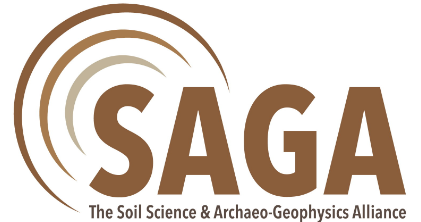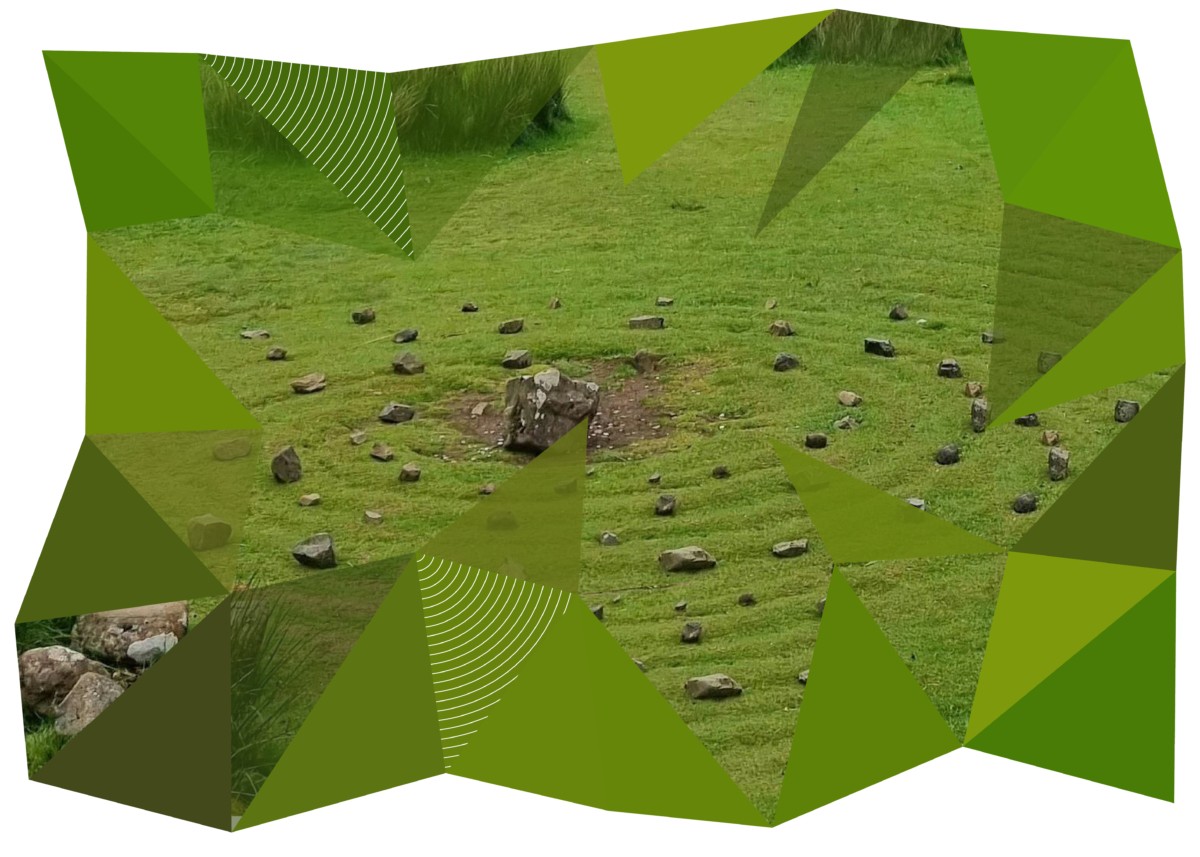Geophysical methods, such as ground penetrating radar (GPR) and magnetometry, enable archaeological sites to be detected and recorded in a high-resolution and non-invasive manner. These methods measure the physical properties of the soil and surveys of a site can quickly show subsurface features that may be of archaeological interest. However, a significant issue is the interpretation of geophysical datasets due to an incomplete understanding of the relationship between soil properties and geophysical signatures. This has hampered geophysical surveys moving beyond basic prospection of sites to become a significant tool for answering more complex questions about archaeology in the landscape.
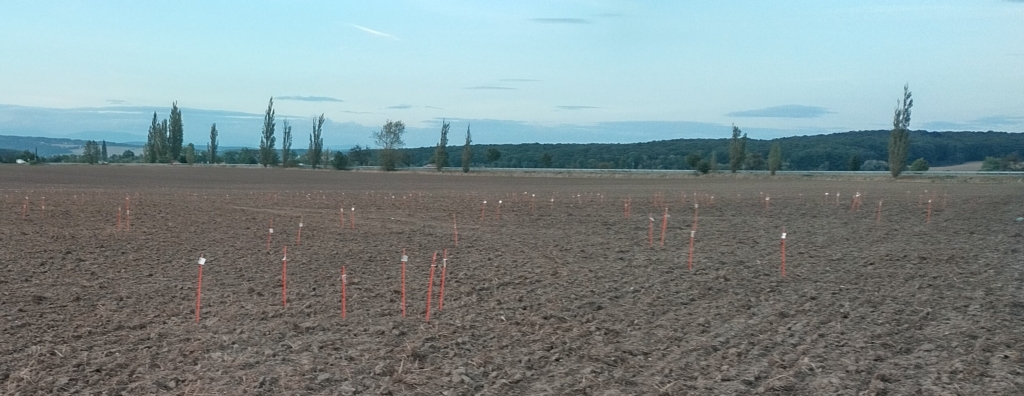
COST Action The Soil Science & Archaeo-Geophysics Alliance: going beyond prospection (SAGA) which ended in April 2023, aimed to move the field forward by building an international network of geophysicists, archaeologists, soil scientists and other experts to develop interpretation capabilities and promote research collaborations.
The Chair of the Action, Dr Carmen Cuenca-Garcia is now a Distinguished Researcher at the University of Valencia, but when the idea to propose the Action arose, she was a young postdoctoral researcher in archaeology.
Integrating perspectives
“It was clear that the integration of archaeological geophysics with soil perspectives was needed to better understand the responses that we were getting from the techniques,” Carmen explains. “This could also give us an additional layer of archaeological information.” Carmen explored the integration of soil characterisation as part of archaeo-geophysical investigations at Scottish sites during her PhD at the University of Glasgow. It was during her postdoc in Crete that she and other like-minded colleagues organised a couple of expert meetings to discuss how to enable this integration on a larger scale and the proposal for a COST Action emerged. “We got feedback very quickly and developed a network of proposers. It was a beautiful process. The core of people were early-stage researchers, but we also involved more experienced people too. It was a great experience from beginning to end,” recalls Carmen. “And our application was accepted on the first submission.”
“I learnt a lot and the Action also gave me a lot of opportunities”
Dr Carmen Cuenca-Garcia, Chair of the Action SAGA
“During the Action, we organised 10 meetings and 31 short-term scientific missions (STSMs), along with six training events—four in-person and two online—to improve the use of geophysical methods and soil analysis in archaeology for students and professionals,” she continues. “Our efforts resulted in numerous outputs including 53 scientific publications.”
Discover more about SAGA’s first Training School:
In addition, the Action is about to publish an open access book ‘World Archaeo-geophysics Country-based perspectives on the use of geophysics in archaeology’ that summarises some of its work and it has also recently established a dedicated Collection in the COST Gateway in Open Research Europe entitled ‘Geophysics and Soil Science in Archaeology‘ to serve as a specialised platform for publishing SAGA-related research, beyond the Action completion and with free access.
Another significant output from the Action is a database that maps the available instrumentation across Europe and also includes information on soil analysis at the country level including some descriptions and agreed common methodologies. “To feed the database, during COVID, we organised ‘SAGAthons’ that involved colleagues coming together online and intensively building the database,” says Carmen. “These were sessions of just a few hours but very concentrated.”
In terms of sustaining the network, the SAGA community is looking to integrate with the International Society of Archaeological Prospection (ISAP). “We are in the process of writing a Memorandum of Understanding to identify the ways in which we as a community can contribute to ISAP and the benefits for each side,” says Carmen. “Many SAGA participants already belong to ISAP.” Special ‘SAGA’ sessions at ISAP conferences are planned and the ISAP Annual meetings should be a focus to update the SAGA database.
Personally, for Carmen, the Action was quite demanding, but it provided her with valuable skills such as project management. “I learnt a lot and the Action also gave me a lot of opportunities,” she concludes. “The research I am focusing on now follows the same line as SAGA, where I’m integrating remote sensing, near-surface geophysics and soil analyses to study Iberian Iron Age sites.”
Eye-opening
Dr Jan Horak from the University of Hradec Králové in the Czech Republic was a Work Group leader in the SAGA Action and found the experience to be a real “eye-opener”.
“This was my first COST Action, and it was really interdisciplinary. It helped me realise how the various disciplines worked together in archaeological research and where my focus, as a younger researcher, should be,” he says. “It also showed me the power and importance of networking. Through discussing new topics or pushing the limits of how things are usually done, participation in an Action can really push you out of your comfort zone and this was the biggest aspect of the whole SAGA experience for me. It changed how I viewed the science and how I should be doing the science.”
Another interesting aspect for Jan was how the different disciplines were integrated. “The most difficult thing was finding a common language,” he explains. “Even agreeing on what is meant by data was difficult! Data means many things to different people and has an extreme influence on daily work especially if you are trying to develop common methodologies and terminologies.”
Of all the activities during SAGA his STSMs in Paris and then Madrid stand out. “These missions focused on how to integrate data between disciplines, and they provided a framework for new ideas that have led to interesting collaborations. They were the most productive weeks of my last four years!”
“My SAGA experience helped me to better formulate my ideas in a more profound way and develop a long-term plan for the lab”
Dr Jan Horak, Working Group leader in the SAGA Action
Jan received funding from the Czech Ministry of Education due to his active involvement in SAGA that helped fund his STSMs. “I preferred to fund activities in SAGA via this grant to leave more funding in the Action for others,” he says.
The funding for SAGA was his first big research grant and gave him experience in how to lead a project, manage people in a team and plan. “When I applied to move to my new position at the University of Hradec Králové from the Czech University of Life Sciences my SAGA experience helped me to better formulate my ideas in a more profound way and develop a long-term plan for the lab.”
North Macedonian SAGA
“SAGA was a great opportunity to find and collaborate with a wide variety of experts,” says Radomir Ivanovikj, Senior Curator at the Archaeological Museum of the Republic of North Macedonia. “Our country had only one instrument – a ground penetrating radar – and we only had a basic knowledge of how to use the equipment. But with the SAGA training school that we organised, we learnt about the different geophysical methods and soil properties.”
Radomir joined SAGA following suggestions from two trainers, Martin and Anne Roseveare of Tigergeo Limited, that he should get involved. “Anne and Martin gave us basic training on GPR to enable us to start working and gain experience in the technique,” explains Radomir. “They said nobody was representing North Macedonia in SAGA so they proposed that I should get involved.”
“I had no clue that something like SAGA was available. I was relatively new to the field – my main focus being as an archaeologist and a museum curator,” he continues. “But my MA had a course on geophysical perspectives in archaeology and remote sensing so I knew how much we could gain and how much we could save by putting the focus on the right place!”
Once he was involved, Radomir applied, together with Anne, Martin and Prof David Jordan of Liverpool John Moores University, to organise a Training School in Valandovo in the southern part of the country near the border with Greece. “This is the area where I do most of my archaeology,” he says.
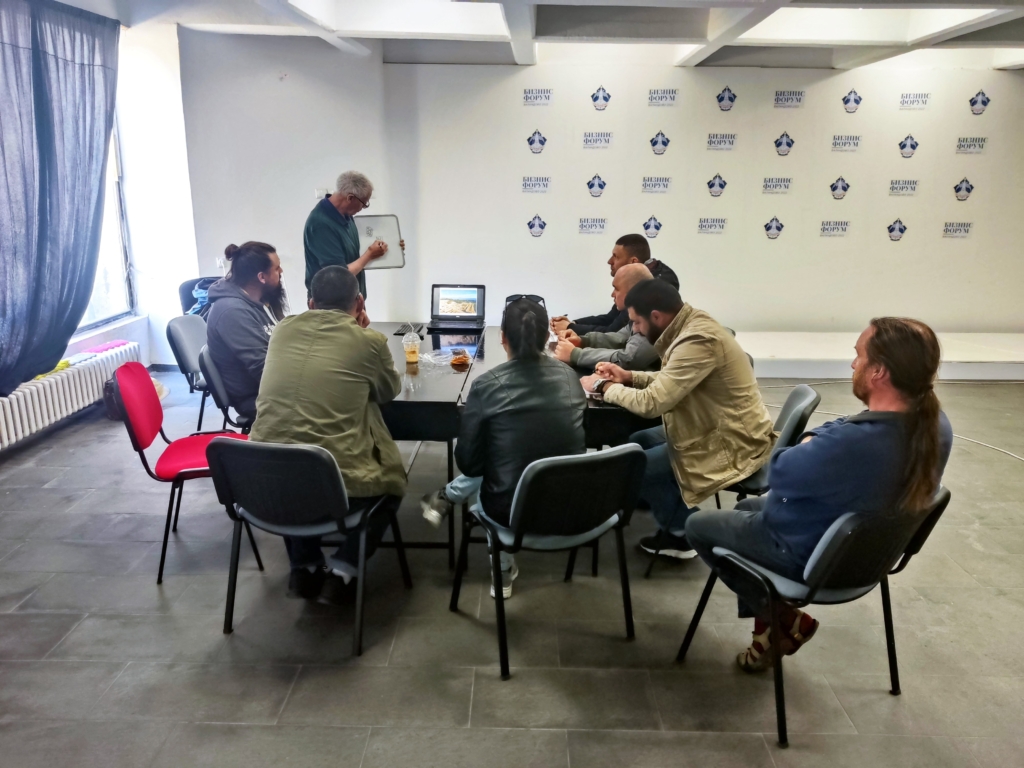
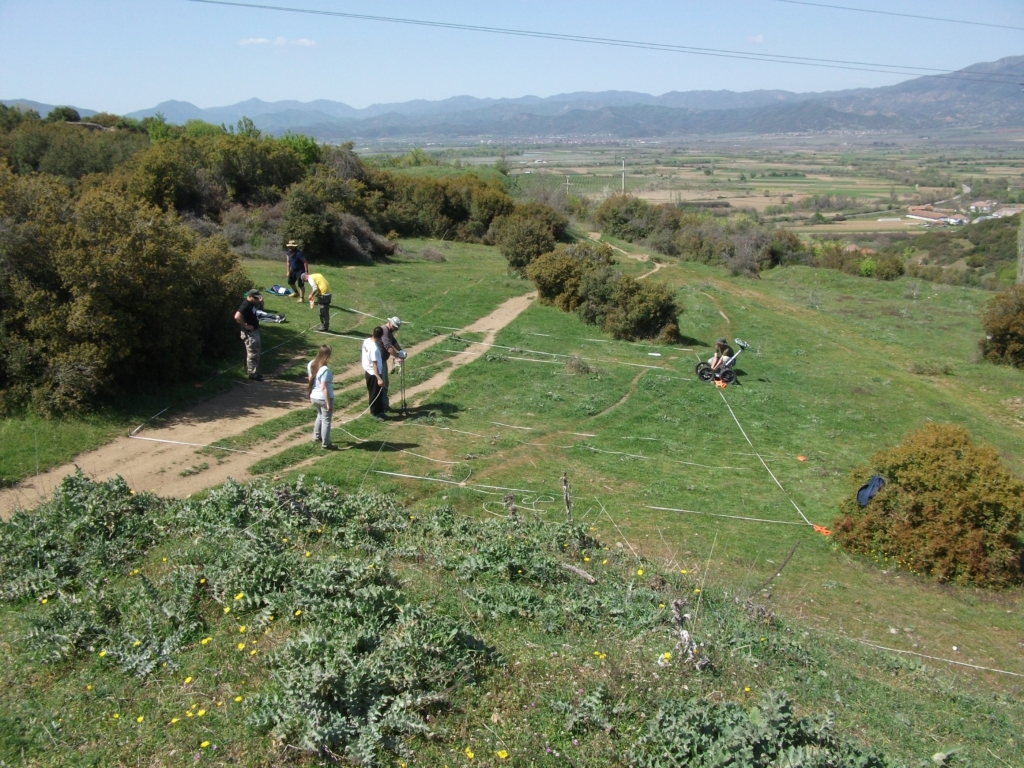
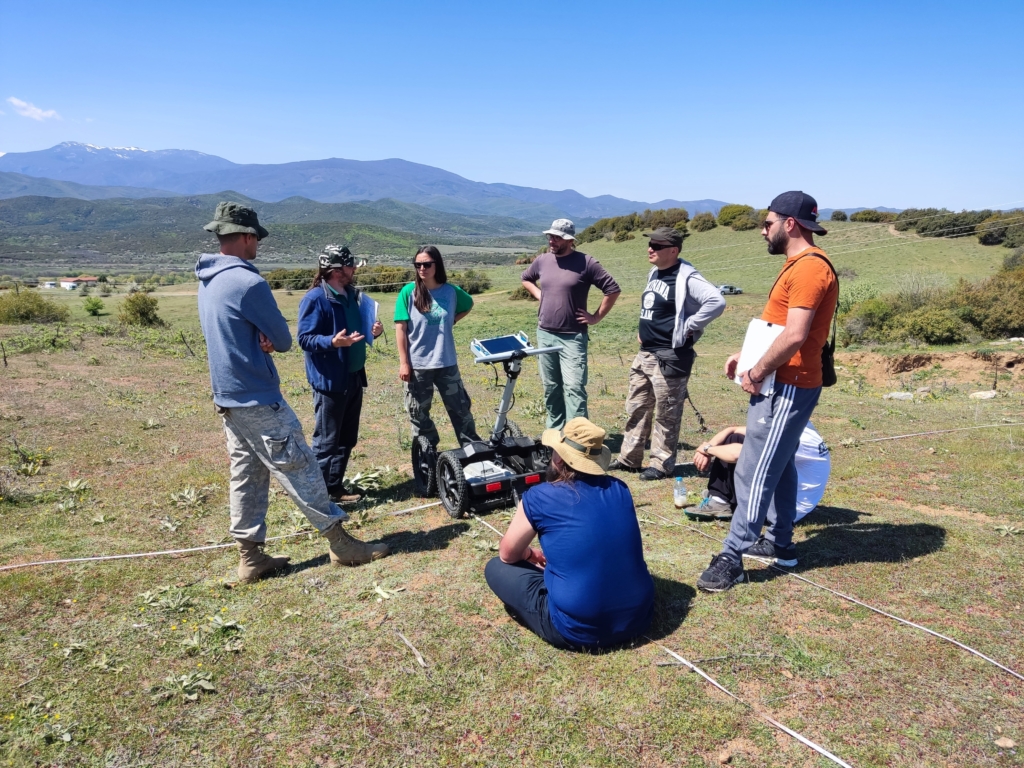
“We gained a lot more knowledge about geophysical methods,” continues Radomir. “And we created a team who is now available to perform geophysics across Macedonia. Around ten people were involved in the training school. Of those, only three of us had previous experience of these methods. Now six or seven of us are directly involved in these activities and others are joining us when they can.”
“Thanks to the COST Action we gained a lot of experience that we are now able to implement on our geophysical surveys around the country”
Mr. Radomir Ivanovikj, Management Committee member representing North Macedonia
Now SAGA is over Radomir is continuing to collaborate. “I am constantly in contact with Martin and Anne to see how I can improve and get better results with our surveys and facilitate more equipment,” he says. “And I am discussing a potential collaboration with David to strengthen our museum team.” And there is a huge need for surveying in his country. “We could not survey even one per cent of all the possible sites,” admits Radomir. “We have 6,000 registered archaeological sites in North Macedonia. Until now most of our work was focused on known archaeological sites, but lately, we are surveying sites where there is immediate need, if building work is about to start. Thanks to the COST Action we gained a lot of experience that we are now able to implement on our geophysical surveys around the country.”
Additional information
View the Action website
Discover the Network website
Open Research Europe Collection ‘Geophysics and Soil Science in Archaeology‘
